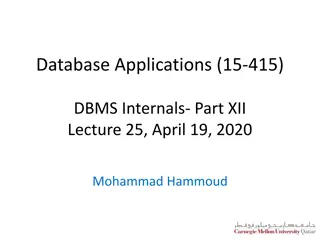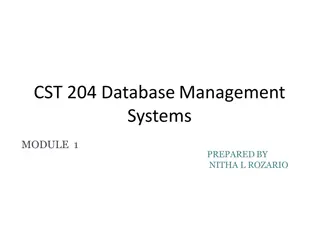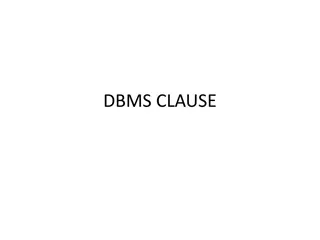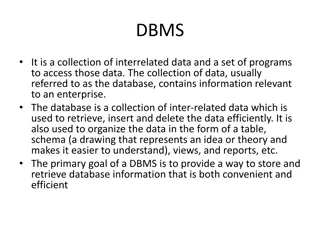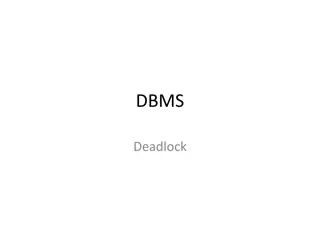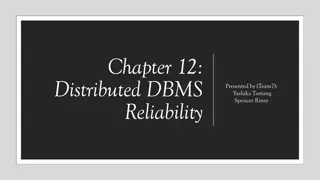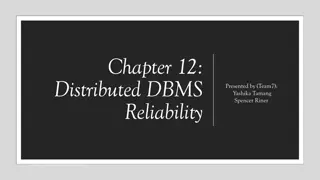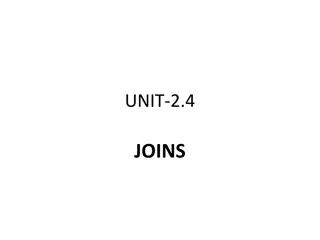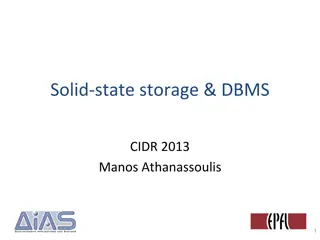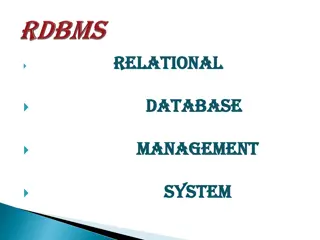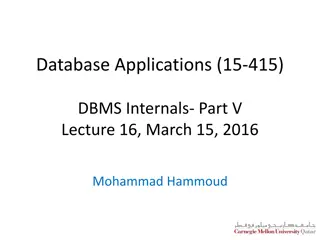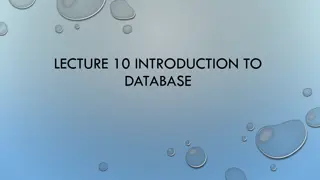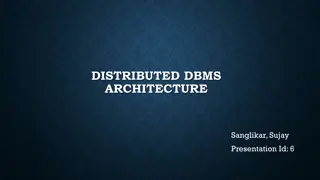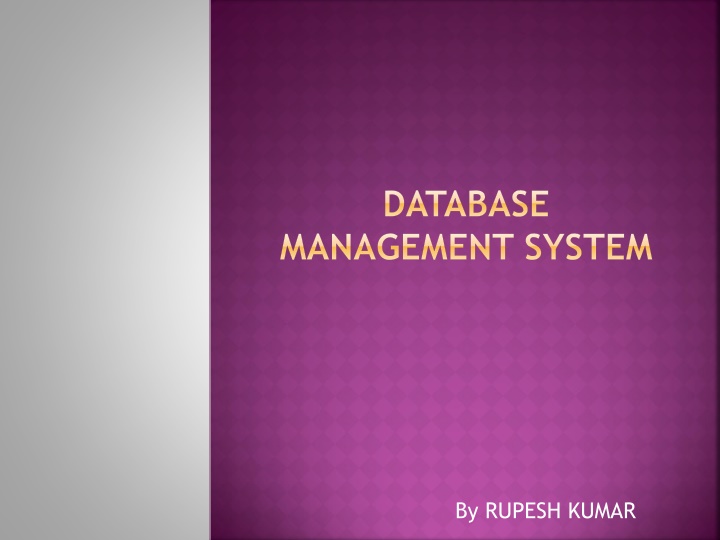
Database Management Systems and Models
Explore the world of database management systems (DBMS) and various database models in the realm of data organization, integrity, and access control. Learn about popular DBMS technologies like IBM DB2, Oracle, Microsoft SQL Server, and MySQL.
Download Presentation

Please find below an Image/Link to download the presentation.
The content on the website is provided AS IS for your information and personal use only. It may not be sold, licensed, or shared on other websites without obtaining consent from the author. If you encounter any issues during the download, it is possible that the publisher has removed the file from their server.
You are allowed to download the files provided on this website for personal or commercial use, subject to the condition that they are used lawfully. All files are the property of their respective owners.
The content on the website is provided AS IS for your information and personal use only. It may not be sold, licensed, or shared on other websites without obtaining consent from the author.
E N D
Presentation Transcript
DATABASE MANAGEMENT SYSTEM By RUPESH KUMAR
INDEX Database? Types? Abstraction? Database Models? Database Integrity? ACID? RDBMS? Normalization? Data Warehouse? Database Design? SQL?
DATABASE-TYPE-ABSTRACTION Collection of Organized data to fulfill certain requirement. Types : Flat file, relational, distributed. Data abstraction Physical- how? what? Logical- what ? View- UI?
DATABASE MODEL The manner in which data is stored, organized and manipulated. Model types: Flat model, Hierarchical model(tree like), network model(graph), relational model, Dimensional model, Object database
DBMS Software package to control operations on data, stored by model standards. Need? Redundancy is controlled. Unauthorised access is restricted. Providing multiple user interfaces. Enforcing integrity constraints. Providing backup and recovery. Ease of maintenance
SYSTEM VIEW DBMS Handler DBModel Data
DATABASE INTEGRITY Ensures Entered data is accurate Valid based on predefined rules Consistent (with no contradiction) Types Entity integrity- (table must have PK and unique non null records related to it) Domain integrity- (restricting data to predefined data types, e.g.: dates.) Referential integrity- (existence of a related record which is referenced)
ACID Atomicity : operation(s) on data can have only two states fail or success Consistency: only valid data will be written to the database(follow the rules) Isolation: One at a time (~mutual exclusion) Durability : committed transaction will not be lost.
POPULAR DBMS IBM DB2 Oracle 11g Microsoft SQL Server 2003/2005/2008 Open source database: MYSQL 5.*
RDBMS Invented by E. F. Codd at IBM in 1970 Model type: Relational Data is structured in database tables, fields and records. popular RDBMS are MS SQL Server, DB2, Oracle and MySQL.
NORMLIZATION Process of efficiently organizing data in a database. Removes redundancies, and increases the clarity in organizing data. Normal form ? 1NF (No Repeating Elements or Groups of Elements) 2NF (Eliminate Redundant Data) 3NF (Eliminate columns not dependent on primary key) 3.5NF/BCNF (determinant must be a candidate key.) 4NF (no multi-valued dependencies) 5NF (no cyclic dependencies )
DB DESIGN PROCESS Determine the purpose of your database Find and organize the information required Divide the information into tables Specify primary keys Perform Normalization Use data modeling language/diagrams/chats Analyze and recycle process for better efficiency and requirement Choose DBMS
DATA WAREHOUSE Database used for reporting Three layers functionality Staging is used to store raw data Integration to have a level of abstraction from users Access layer is for getting data out for users
DATA HANDLING SQL: Standard Query Language DDL: CREATE,DROP,ALTER ,TRUNCATE etc. DML: INSERT,UPDATE,SELECT,DELETE etc. DCL: GRANT, REVOKE TCL: COMMIT,ROLLBACK,REGISTER etc.
REFERENCES Abraham Silberschatz Henry F. Korth S. Sudarshan Database System Concepts 6thEdition, Mcgrow-hill publication, January 2010. Wikipedia Google.com

